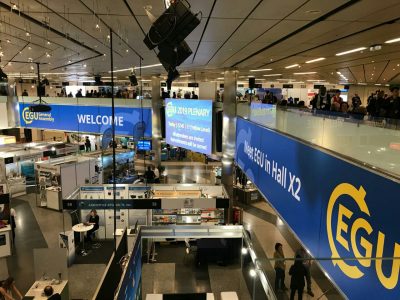RECONECT was at the EGU General Assembly in Vienna (7-12 April 2019), one of the most important events in the geoscience field! Guido Paliaga from CNR-IRPI (Italy) presented a poster (authors: Paliaga, Faccini, Luino, Turconi, Tarolli) on terraced landscape in the Portofino Natural Park, RECONECT Demonstrator A.
Modification of steep slopes with man-made terraces is an ancient and widespread habit in many areas of the world. If the modification assures agricultural practices in mountainous areas, it results even as an important interference with the geomorphic processes: important quantities of soil and sediments are subtracted to the degradation processes and, in case of total abandonment of terraces, they result again available to erosion. Intense rain event may cause partial instability or even collapse of the anthropogenic structures, configuring terraces as an additional source of geo-hydrological hazard.
A crucial point in assessing the potential hazard caused by abandoned terraced slopes is identifying their real extension. LiDAR data analysis is an important assessment tool particularly in strong steepness areas due to the capability of recognizing linear regular structures. The poster illustrated how LiDAR data analysis has been used to identify terraces in the Portofino Natural Park area (Liguria region, Italy) as one of the preliminary activities of the RECONECT project. Mapping terraces is the first step to evaluate the potential risk associated to the possible instability processes and the NBS interventions to be realized. Land use evolution in the area from 1800 to present have been indeed found through historical maps examination and used in conjunction with LiDAR analysis results.



